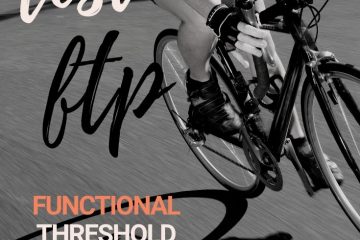The truth about cadence and cycling

What cadence should I ride? What’s the best cadence for cycling?
This is a common question from new cyclists faced with a host of new data. When you first start cycling you may initially focus on speed and cadence as your only two metrics for measuring cycling performance.
So how fast should those legs be spinning then?
Cycling cadence doesn’t occur in a vacuum
If you’ve been to a gym spin class lately, you’ve seen what focusing on cadence alone looks like— folks bouncing all over the saddle at extremely high rpms with little to no resistance.
They may be burning calories but they’re not improving their real ride performance.
Power you produce and ultimately the speed at which you ride is determined by two things in combination- the force you’re putting on the pedals times the speed at which the pedals are turning.
Related: Is cadence the answer to better running?
Is higher cadence always better?
A typical triathlon mantra is ‘spin to win’ but is high cadence really the best solution for everyone?
Long-time advocates of high cadence cycling will point to the classic example of Lance vs. Jan Ulrich, Lance rode away from Jan with his higher cadence compared to Jan’s preferred lower cadence style.
The truth is, Lance was just a better cyclist overall, one who happened to prefer a higher cadence riding style. The same is true with you, your best cycling performance may be achieved on a range of normal, as opposed to always pushing for higher cadences.
But doesn’t cycling at a high cadence save your legs for the run? Higher cadence advocates may point to studies performed showing that study participants performed better on a subsequent post-cycle run than subjects who cycled at a slow cadence.
The truth is that there are conflicting studies that show better running success at various cadences. What matters is that you train yourself to run well after cycling at race pace intensity by practicing adequately during training efforts.

How does power work with cadence?
Power (watts) is simply torque (force put on the pedal) times rotational speed (cadence) Low cadence= high force= more fast twitch muscle recruitment while a higher cadence= lower force- more slow twitch fiber recruitment.
To explain the differences further, a higher cadence makes the work performed more tolerable to the muscle. It recruits less high twitch fibers and ‘burns less matches.’ Cycling at a higher cadence also tends to stress your cardiovascular system more.
Conversely, cycling at a lower cadence stresses your muscular system more. Cycling at a lower cadence also recruits more muscle fibers overall as well as more fast twitch fibers.
As far as your cardiovascular system goes, lower cadence cycling costs less in terms of oxygen consumption. In fact, studies have shown that cycling at an ultra low cadence (40-60 RPMs) uses the least percentage of v02 max for a given effort.
Related: Getting started with cycling
Cycling Cadence for Beginners
The bottom line about cycling cadence for beginners?
Cadence selection overall is not an either or proposition Your personal strengths, weaknesses, physiological makeup determines your optimal cadence
Someone who is training regularly at a variety of cadences will eventually find their optimal cadence for training and racing. But you should also train your non-preferred way to increase your comfort level at various cadences and to improve your fitness.
Over-gearing, or training at slower cadences can help you develop strength while practicing pedaling with a higher cadence, at a range of intensities, can help improve pedaling efficiency. For beginners, form work such as one legged pedaling drills and spinups can also help your pedal stroke.
Don’t let a preoccupation with cadence cloud what’s really important, making sure you develop the ability to maintain your goal power through your most efficient application of cadence, during your goal event.
Want some virtual or in-person company on those long runs? Training is more fun with community. Check out Atlanta Tri Club for group training and Energy Lab for triathlon and swim coaching!


Hi, I’m Bethany–coach, author of Courage to Tri, 2x Kona qualifier, and twin mom. I believe if you have a body you’re an athlete. Grab my free 5k plan to start your own athletic journey.
More Cycling Cadence Resources
The Science of Optimal Cycling Cadence – Spinning® Indoor
spinlife.spinning.com
What is the Optimal Cycling Cadence?
galebernhardt.com
Optimal Cycling Cadence In Triathlon / Duathlon
the5krunner.com
So What Is Optimal Cycling Cadence? | ENDURANCEWORKS
enduranceworks.com



11 Comments
Kelly · July 26, 2019 at 8:09 pm
Such a great article. So many people think faster is always better, but definitely not the case!
Natalie · July 27, 2019 at 2:13 pm
Wow such a great article. Thanks for this informative post. Glad I stumbled upon this. Will share it with my friends too.
Farrah · July 27, 2019 at 2:41 pm
Great article! I’m definitely hoping to start biking more after I finally make it home from my road trip, so I’m gonna have to keep these in mind!
Angela · July 27, 2019 at 7:02 pm
This is a super informative post about cadence! I have to admit that I cycle at a lower cadence, so I am glad that there may be advantages to it!!
Leslie · July 27, 2019 at 11:59 pm
I appreciate your knowledge of cycling. You always have great insight!
Abbey Sharp · July 28, 2019 at 1:41 am
This is an area i know very little about, so thank you for the awesome information! There’s a lot to know, so thanks for breaking down the info.
Betty Songer · July 29, 2019 at 11:42 am
Great article! Helps explain the why’s and makes it more understandable
Ultimate Guide: How to start cycling — Bethany Rutledge · July 22, 2019 at 8:13 pm
[…] Related: Is there a perfect cycling cadence? […]
The truth about running cadence — Bethany Rutledge · July 24, 2019 at 3:21 pm
[…] Related: What’s the deal with cadence and cycling? […]
What you should know about Functional Threshold Power [FTP] testing — Bethany Rutledge · July 28, 2019 at 5:56 pm
[…] Related: What every cyclist should know about cadence […]
A Triathlete's Guide to Training with Power — Bethany Rutledge · July 30, 2019 at 4:26 pm
[…] Related: What you need to know about cadence and cycling […]
Comments are closed.